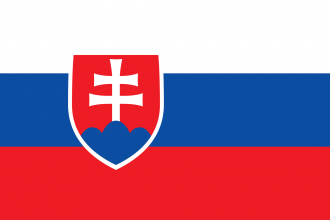The Ministry of Defence of the Slovak Republic, is the central body of state administration that guarantees the security of the country and its citizens, co-ordinates the activities of the central bodies of the state administration and institutions, as well as controls the ‘inviolability’ of the Slovak airspace, while managing military facilities.
The Slovak Armed Forces consist of the Land Forces and the Air Force. Having as their main goal the preservation of security of the Slovak citizens and the defence of the nation, they actively participate in international missions towards the promotion of peace and stability in the world, the prevention of conflicts, as well as addressing crisis situations according to the international law. Through a preventive policy, the Slovak Armed Forces secure the Slovak Republic’s interests, which include the deterrence of armed conflicts within the country’s territory.
The general government budget for 2016, reflected a slight decrease in the allocation for “Defence” purposes, as a percentage of GDP, to 1%.
When considering the evolution of the Slovak Defence budget over the previous decade (2005-2015), there are some slight year-on-year fluctuations (as a percentage of the GDP).
In 2015, the Slovak military spending, was attributed by 56.2% to Personnel, 20.1% to Procurement & Construction and 19.2% to Operations & Maintenance, with other spending directions receiving much smaller percentages of the available budget.
In another division, in relation to the type of Force, military spending was mainly directed to administrative and supporting functions (included as “Others” below), followed by the Slovak Land Forces (24%) and the Air Force (22%).
In the last ten years, the Slovak Republic’s arms procurements included Aircraft (US $15 million), Missiles (US $13 million) and Armoured vehicles (US $2 million).
The Arms suppliers to Slovakia during the same period (2005-2015), included Russia (40%), the Czech Republic (36.7 %), Ukraine (16.7%) and Italy (6.7%).
In 2016, the nation’s defence spending towards the modernization of the Armed Forces equipment and facilities was projected to be increased to some 19% of the total defence budget. The latter, is the result of successive increases of the procurement/modernisation expenditure, as only 8% was allocated in this direction in 2008 and 16% in 2013. Thanks to this progressive increase the country managed to kick off some of the largest modernization projects in the history of the country’s armed forces, such as the purchase of Black Hawk multi-purpose helicopters (9 units) and the Spartan aircraft (two aircraft have been ordered).
It cannot be omitted to mention the positive side effects of these acquisitions, including the potential establishment of a Black Hawk simulation centre in the Slovak territory, as an industrial cooperation project.
Ongoing negotiations indicate the potential acquisition of 8x8 and 4x4 vehicles, the probable upgrade of existing BVP tracked vehicles, as well as the procurement of new 3D radar systems. Projected future procurements also include the purchase of attack helicopters, combat aircraft (with the lease of the Gripen aircraft likely to fall through) and air defence systems (expectations are for the replacement of the Kub and Igla systems and the upgrade or replacement of the S-300 system).
However, all the aforementioned procurement plans, depend on the government’s ability to increase the defence budget or provide further funds, beyond the allocated budget. The
Slovak Republic could take advantage of this increased spending momentum in order to expand its small but specialised defence industry further, making use of related industrial cooperation and/or offset opportunities.
According to the White Paper on Defence (2016), the Slovak Republic Defence aims towards the gradual strengthening of the defence capability of the country (including in terms of cyber security systems), the enhancement of the Slovak contribution to the collective defence and the accomplishment of Slovak international commitments in the area of defence, including the harmonisation of its defence policy according to the Euro-Atlantic orientation memberships (in NATO, EU and V4 (Visegrad Four, or V4, an alliance of four Central European states; the Czech Republic, Hungary, Poland and Slovakia)). Within this context, while taking into consideration at the same time the economic reality, a dynamic development towards the progressive modification of the main types of the weaponry and techniques has been predicted for 2016 onwards.

